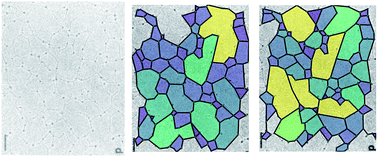Simplified computational model for generating biological networks†
Abstract
A method to generate and simulate biological networks is discussed. An expanded Wooten–Winer–Weaire bond switching methods is proposed which allows for a distribution of node degrees in the network while conserving the mean average node degree. The networks are characterised in terms of their polygon structure and assortativities (a measure of local ordering). A wide range of experimental images are analysed and the underlying networks quantified in an analogous manner. Limitations in obtaining the network structure are discussed. A “network landscape” of the experimentally observed and simulated networks is constructed from the underlying metrics. The enhanced bond switching algorithm is able to generate networks spanning the full range of experimental observations.

- This article is part of the themed collection: New Insights into Biomolecular Systems from Large-Scale Simulations


 Please wait while we load your content...
Please wait while we load your content...